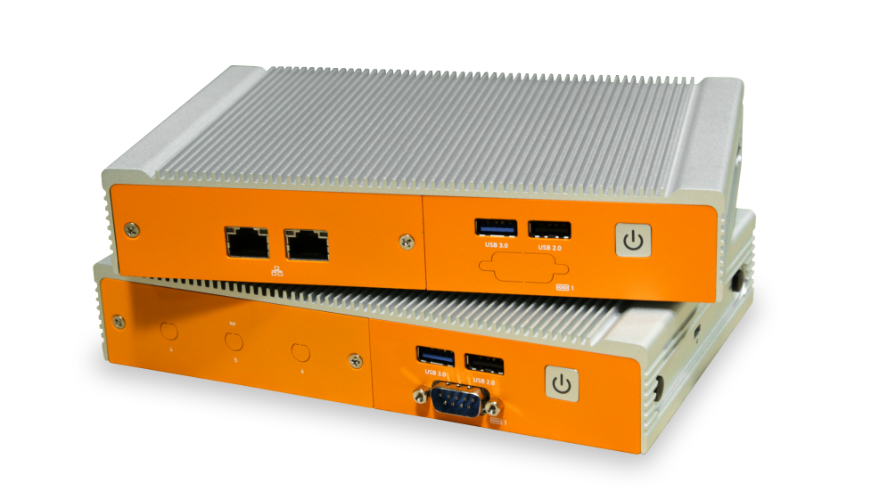Predictive Maintenance – how AI and the IoT are Changing Machine Maintenance
The Internet of Things (IoT) and artificial intelligence (AI) are changing how we maintain equipment to save time, save money, and keep systems running. Continue reading to learn the different types of maintenance, including reactive maintenance, preventive maintenance, predictive maintenance, and prescriptive maintenance, and how technology is powering innovation in the world of machine maintenance.
Taking care of the machines we count on is important. But sometimes it is inconvenient, like being without your car for a few hours while your oil is changed. Sometimes it’s not just inconvenient, it’s impactful to the bottom line. For example, shutting down a production line to perform equipment maintenance. But do you know what’s worse? Having the line shut down because of an equipment failure due to lack of maintenance. If you are in charge of that line, you don’t downtime for any longer than absolutely necessary.
What is reactive maintenance?
Reactive maintenance is performing maintenance only after an asset has broken down. If the equipment isn’t critical and it’s easily replaced, this approach isn’t a problem. However, if the asset is a critical piece of the infrastructure, there might be potential for collateral damage when the equipment fails.
For example, if you run a restaurant and rely on a walk-in freezer, you may not notice that the freezer is failing until the food starts to defrost. The unplanned expenses might include wasted food, overtime labor costs, and rush charges for parts. Not to mention the cost of closing the restaurant until it can be fixed.
What is preventive maintenance?
Preventive maintenance is the act of maintaining something on a scheduled basis to keep it in good condition (and prevent the need for reactive maintenance). Effectively you are fixing it before it breaks. You can perform preventive maintenance based on dates or usage.
Data based preventive maintenance vs. usage based preventive maintenance
- Date based preventive maintenance
- Some preventative maintenance is based strictly on the calendar. For example changing your HVAC air filter every 90 days.
- Usage based preventive maintenance
- Preventative maintenance can also be recommended based on usage – like rotating your tires every 5,000 miles.
Preventive maintenance might also be recommended based on a combination of both time and usage. For example, you are probably very familiar with the recommendation to change the oil in your car every 6 months or 5,000 miles, whichever comes first.
The cost effectiveness of preventive maintenance
While preventive maintenance can help you avoid reactive maintenance and the associated costs of collateral damage, it’s not always the most cost effective form of maintenance. In some cases, maintenance may be performed even when it’s not necessary. In other scenarios, especially if the equipment is in particularly harsh environments, a preventive maintenance schedule may not happen frequently enough. In that situation, the inadequate maintenance may cause the equipment to break down unexpectedly. This difficult to strike balance has led to the development of new maintenance strategies designed to provide just the right amount of ongoing attention to equipment.
What is predictive maintenance?
A predictive maintenance model uses data to predict when equipment is likely to require maintenance. By collecting data from the equipment and other relevant data points, engineers can identify reductions in efficiency that may suggest the need for maintenance. Advancements in industry 4.0 and the industrial internet of things (IIoT) have enabled huge advances in how data is collected and how it can be used for ensuring equipment uptime.
Data for predictive maintenance
The internet of things has enabled access to data from nearly anywhere. That can include sensors on machines that monitor things like energy usage, pressure, temperature, sound, and/or vibration. Cameras can even be used as visual sensors. A predictive maintenance model can take into account many variables that address the unique conditions of an individual piece of equipment, its usage, environment and how each of these things change over time.
Use of AI for predictive maintenance
Using artificial intelligence (AI), a predictive maintenance model can evaluate historical data as well as thousands of current data points to identify patterns and trends. These trends can be used to predict when a failure might happen so that maintenance can happen to avert the failure.
For example, in our freezer example, a predictive maintenance program might identify an imminent failure after seeing energy usage going up and an increase in vibration.These data points could identify required maintenance to the condenser or other components long before the temperature changes and the food starts to defrost.
What is prescriptive maintenance?
Prescriptive maintenance takes predictive maintenance a step further. In addition to using data to predict failures, it also prescribes the most effective maintenance actions. The data incorporated into the decision making includes machine data, but it can also incorporate other data including maintenance staff schedules, demand forecasting, availability of parts, weather and any other variables identified by the user.
Prescriptive maintenance can also incorporate digital twins and/or digital simulations to experiment digitally with adjustments in the industrial process to determine the best plan of action. For example, the digital simulation could determine that by slowing a machine down, it could extend the life of a piece of equipment to coincide with the delivery of a new part or availability of the maintenance team.
Industrial computers to support your maintenance strategy
An effective maintenance plan can have positive ripple effects across the business including improved product quality, reduced downtime, enhanced employee safety, elevated return on investment (ROI) and reduced maintenance costs. Whatever maintenance strategy you choose, OnLogic has a hardware platform to support it.
IoT Gateways
For a cloud-based solution, IoT gateways are the bridge between your assets and the cloud. These computers live in general, in close proximity to the IoT devices, for the purpose of collecting data. Depending on needs, they can consolidate, filter, analyze and/or perform computational tasks on the data before sending it to the cloud.
For example, the Helix 300 Series of industrial computers is optimized for the IoT and is available with cellular connectivity and dual LAN to help collect and deliver data when and where it’s needed.
Edge Computers
Implementing your AI maintenance solution on the edge enables on-site security with low latency performance. For example, the Helix 600 offers 10th Gen Core i processing with expansion for additional storage, I/O or graphics cards.
Have more questions? Our team is ready to help. Contact us today.
Get the Latest Tech Updates
Subscribe to our newsletters to get updates from OnLogic delivered straight to your inbox. News and insights from our team of experts are just a click away. Hit the button to head to our subscription page.
Share
More Articles
OnLogic Industrial Computers
Discover OnLogic's multitude of industrial computers that will help you to advance your IoT project
Learn more at OnLogic.com
OnLogic Industrial PCs: Designed to last. Built to order. Delivered in days. Visit our online store at OnLogic.com







